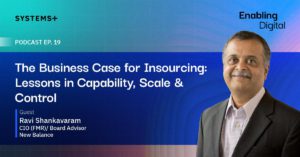According to Gartner, IT spending backed by the cloud will cross $3.7 trillion in the next two years or so. While that’s a huge number it’s not that surprising. Ever heard of organizations taking up digital transformation without using the cloud? I surely haven’t. Everyone is understanding the true value of disruption, and technologies like AI and IoT are seeing increased consumer demand today. This means that the demand to leverage the cloud within organizations is also on the rise. Public cloud platforms like AWS, Microsoft Azure, Google and Alibaba Cloud have already made a mark for themselves in this rapidly changing technological landscape, and rightly so. They offer businesses a chance at better investment value, higher delivery speeds, increased agility, better storage options, and typically costs less. Works like a charm, right?
It sounds simple, but really, it isn’t. I’ll tell you why. Most businesses look at the cloud as one entity, but that’s not the case. The cloud is not just one platform. It is an integrated system of different hardware, software and logical links that work together to collate data and bring it to the end-user. Many organizations also feel that migrating legacy infrastructures on to the cloud may be a boon for them, and hence, rush into it. This is where they lose out.
Let’s talk about spend first. For example, AWS offers pay-as-you-use services along with easy scalability, which is a great or obvious reasons. You only pay for what you use, so spends are ideally optimized. But here’s the catch. Without technical experts on board, analyzing cloud costs to run a given service becomes difficult. You may end up paying for unneeded options, and forego ones that would actually be beneficial. Sometimes, cloud-service bills may also be vague, so you simply don’t get the data you need to understand what’s driving the spikes and dips in costs. Research says that almost half of compute resources that organizations sign up for are used for non-production purposes, and the majority of servers used for these functions only need to run during the typical 40-hour work week, not 24/7. If that’s the case, you may end up losing out on a lot of money!
Moving on to the utilization front, while a key advantage of moving to cloud is that you have unlimited capacity, enterprises often buy more capacity than they need, to ensure that they have enough resources to handle technological expansion. Then come applications. While planning computing resources, application owners will typically go by the data they have in hand from physical server days (because they don’t really have a precedent) as well as some assumptions around perceived business needs they see coming. And, since this estimation is made keeping in mind the worst disaster and the best growth scenarios, there is ample risk of over provisioning. In fact, no resource restriction actually serves as a motivator for over provisioning.
Published analysis suggests that in the current scenario, many organizations that take up cloud migration do not utilize more than 10 percent of its potential. The best case scenario is a utilization of 30 to 40%. Right Size Cloud Capacity is therefore a necessary consideration, if you really want to maximize cloud value.
So how do you make sure that your cloud resources are being utilized optimally?
A few critical things need to be kept in mind before taking this leap: how much are you spending now and hence willing to spend, how you will sustain peak efficiency with business drivers, and how will automation impact the day to day functioning of your organization?
The first step to solving the puzzle is to choose what kind of a cloud model you would want for your business. For eg: If you are a large scale multinationals, the hybrid cloud could be the most viable. It gives you better flexibility in terms of deciding on the best combination of pay-per-use public cloud, private cloud and an on premise presence. For one, the migration itself becomes staggered and you get the space to decide on a pace, including, giving your internal team the time to come up the curve. To add to that, cloud automation and monitoring tools help you control extra costs and maximize resource utilization. For example: following the capacity versus utilization curve by AWS might be a good start for you to draw a parallel between your demands, budgets and the level of scalability that you are looking at for your business. This will also guide you to move from an infrastructural mindset to an overall IT centric approach.
All of this sounds easy on paper but when you start getting your hands dirty and implementing these changes, it can get really complicated. You can have all the tools and automated processes set in place, but if you don’t have a core, skilled team driving the move, it can very quickly turn into a veritable battleground. Yes, technology has overtaken every other industry with the pace at which it is evolving, but human learning and understanding is irreplaceable.
A lesson learnt in our three decades of experience within the traditional IT framework, with legacy systems, and now with the digital tech following a more agile development model. When it comes to the cloud there will always be difficult questions, but we have managed to answer them all, right from cloud architecture management, cloud migration to enterprise cloud solutions and cloud consulting. We’ve been helping our clients #GetITRight for decades!






